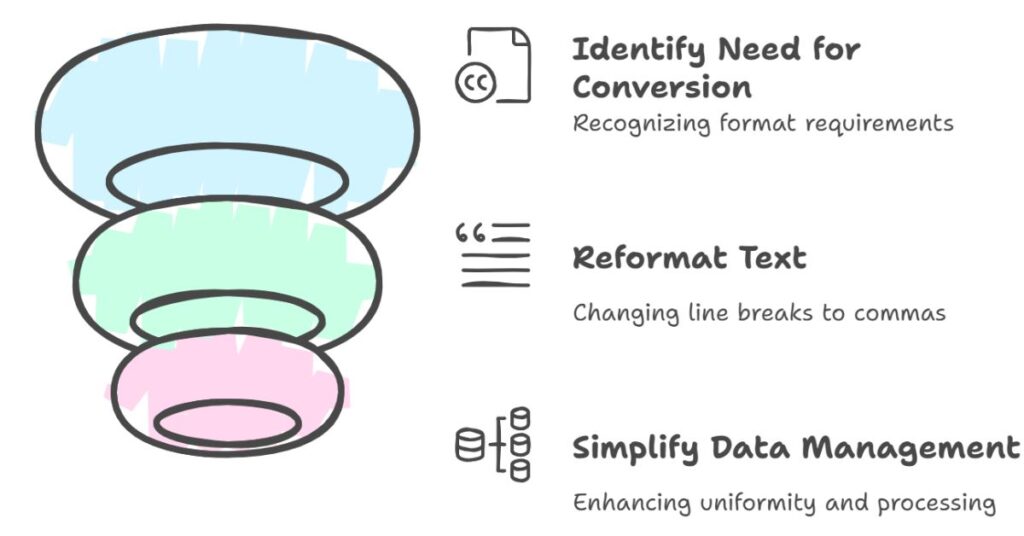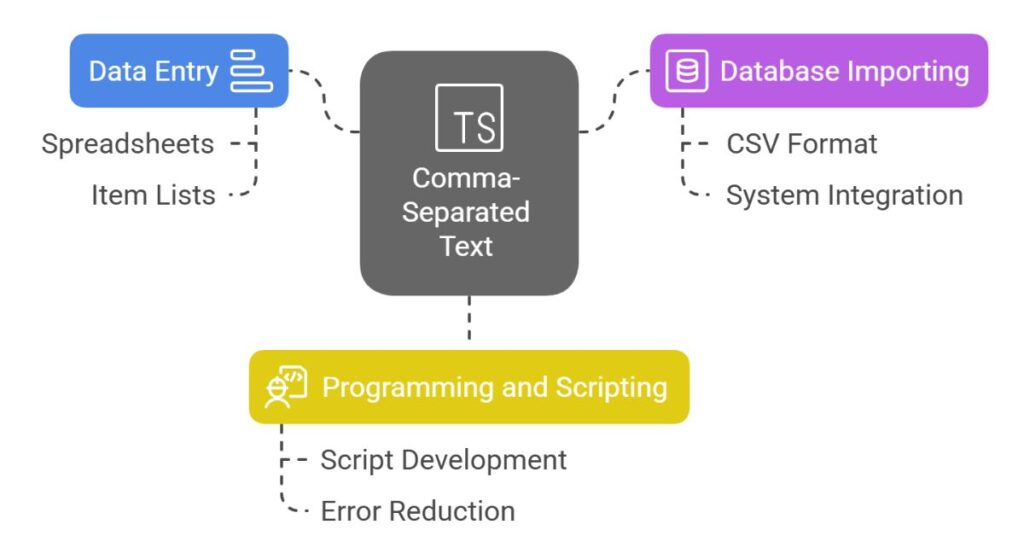New Line to Comma Separated Online
Table of Contents
Working with data often requires transforming text from one format to another. Sometimes, you may need to convert text that is separated by new lines into a more compact form, such as a comma-separated list. This transformation is especially useful when working with spreadsheets, databases, or importing data into applications that require this format.
This guide explains how to convert new line-separated text into comma-separated values online. The process is simple and efficient and can be done without the need for specialized software.
Why Convert New Line to Comma Separated?
When working with text data, the format of the data plays a crucial role in how it is processed. For instance, text data separated by new lines might be easy to read, but when it’s needed for a system or program that requires comma-separated values, the data needs to be reformatted.

Converting new line-separated text to comma-separated text can simplify data management. It is helpful when working with lists of items, names, or other types of data that need to be processed in a uniform format.
Benefits of Comma-Separated Format
- Simplified Import/Export: Many software tools, including Excel and Google Sheets, accept data in CSV (Comma Separated Values) format for easy import and export.
- Cleaner Data: Comma-separated values make it easier to organize data, especially for tasks like analysis or reporting.
- Compatibility: Many programming languages and systems work more effectively with data in comma-separated format.
Steps to Convert New Line to Comma Separated Online
Converting new line-separated text into a comma-separated format is easy and can be done in a few simple steps. Here’s how:
1. Use an Online Converter Tool
There are several online tools available that allow you to paste your text and convert it into a comma-separated format. These tools provide a quick and easy solution without needing to download or install any software.
To use these tools:
- Open the tool in your browser.
- Paste the new line-separated text into the input field.
- Click the “Convert” button to change the text format.
- The converted text will appear in the output box, where you can copy it or download it as needed.
2. Copy and Paste Your Text
Start by copying the new line-separated text from your document or file. The text should have each entry on a separate line, such as:
Apple
Banana
Orange
Grapes
Once you have copied the text, paste it into the input field of the online converter tool. The tool will process the text and return it as a comma-separated list, like this:
Apple, Banana, Orange, Grapes
This process takes only a few seconds, and you can now use the comma-separated list as needed.
3. Download or Copy the Result
After the conversion, you can either copy the comma-separated text or download it in a file format of your choice, such as CSV. The tool will typically provide options for copying to the clipboard or downloading the result as a file.
Why Use an Online Tool for This Conversion?
No Installation Required
One of the biggest advantages of using an online converter is that you don’t need to install any software. You can use these tools directly in your browser, which saves time and effort. This is particularly useful when you are working on a computer that does not have the required software installed.
Fast and Efficient
Online tools are optimized to perform the conversion quickly. In just a few clicks, you can transform your data into the desired format, making the process fast and efficient. You don’t need to worry about complicated steps or settings.
Easy Access
Online converters are available 24/7 and are accessible from any device with internet access. Whether you’re working from home, the office, or on the go, you can access these tools whenever you need them.
Free to Use
Many online tools for converting new line-separated text into comma-separated format are free to use. This is especially helpful for individuals and small businesses that need a simple, no-cost solution.
Common Use Cases for Comma Separated Text

1. Data Entry
Comma-separated text is commonly used for data entry tasks. For example, when you need to enter a list of items or people’s names into a spreadsheet, having the data in a comma-separated format is much more efficient than entering each entry manually.
2. Importing Data into Databases
Databases often require data to be in a specific format, such as CSV, for importing. By converting your new line-separated data into a comma-separated format, you make it easier to import the data into a database or other systems.
3. Programming and Scripting
Many programming languages work with CSV files for storing and processing data. If you’re writing a script or program that needs to work with lists of items, converting new line-separated text into a comma-separated format can save time and help you avoid errors when processing the data.
Tips for Using Comma-Separated Text Effectively
1. Be Mindful of Special Characters
If your data includes special characters like commas, quotation marks, or line breaks, these can cause issues when processing the text. In such cases, make sure to escape or enclose the data in quotes to prevent errors.
2. Validate Your Output
After converting your text, it’s important to check that the result is correct. Make sure that there are no extra commas or missing entries. Most online tools will show a preview of the output, so you can quickly check the formatting before copying or downloading the result.
3. Avoid Redundant Entries
If your new line-separated text contains duplicate entries, you might want to remove these before converting. This will ensure that the final comma-separated list is clean and error-free.
Conclusion
Converting new line-separated text into a comma-separated format is a simple and efficient process. Using online tools, you can quickly transform your data without the need for additional software. This process is beneficial for data entry, importing data into systems, and working with programming scripts.
By following the steps outlined above, you can easily convert your text and improve your workflow. Whether you’re working with spreadsheets, databases, or code, comma-separated text is a versatile and widely-used format that can simplify your tasks and save time.